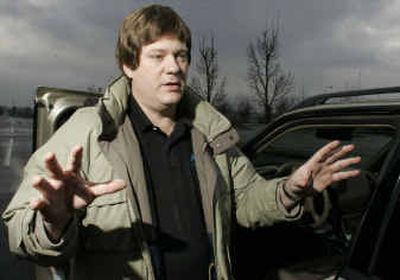Man blamed for panic in India

HILLSBORO, Ore. – Nearly every day, Larry Park rises early and drives the Pacific Northwest looking for earthquakes.
In the bed of his beige pickup, the computer expert has installed a rotating 3-foot disc that he says picks up certain vibrations that he says telegraph impending quakes around the world, but conventional seismographs can’t measure.
Last week, Park, 46, said he detected signs of a major earthquake 22 hours and 31 minutes before the temblor that shook Sumatra over the weekend, unleashing tsunamis that killed more than 100,000 people in a dozen Asian countries.
This week, he said his data indicated another Big One brewing beneath the same area in south Asia. He warned the governments of India, Indonesia and Australia. India, fearing another tsunami, took him seriously enough to issue a public warning.
Tens of thousands of Indians fled their coastal homes in panic. But no quake or giant waves materialized.
The Indian science minister later dismissed Park’s prediction as “hogwash,” and one American scientist called it “gobbledygook.”
Park, standing next to his truck outside a strip mall, said there still is a chance that his prediction will come true.
“It was a tough decision, but it was at least important to pass the information on,” said Park, who runs Terra Research and Consulting Services from his home in Manning, Ore., near Portland.
After a 25-year career in the computer industry, Park started his own consulting business.
On his Terra Research Web site, Park sells copies of his detection system and offers around-the-clock technical support, as well as a self-published book on his philosophy and methods for $104.
He also offers a lengthy discourse on detecting “resonant energy” that is pulsating in the Earth’s flexible crust.
None of Park’s work is peer-reviewed by other earthquake experts, nor is it published in scientific journals.
Park has installed a 3-foot rotating disk in the back of the pickup and satellite dishes at his home to calculate the location and magnitude of pulses that he says are precursors to impending quakes.
In New Delhi in the wake of the panic, Science and Technology Minister Kapil Sibal said his department received the warning, and passed it along to the Home Ministry, which issued an alert.
Officials at the American firm, Sibal said in a televised news conference, “claimed they have some sensors and equipment through which they suggest there was a possibility of an earthquake. So, on the basis of this communication, for anyone to reach a conclusion that a tsunami will hit the eastern coast of India is unscientific, hogwash and should be discarded.”
Park gives a slightly different version of events. He works alone, he said, but passed information about his earthquake predictions to filmmaker Mike McNulty. McNulty conveyed the warning by telephone and e-mail to the Indian, Indonesia and Australian embassies, said Park.
McNulty said that “the forecast is January 1 – it isn’t game over yet.”
“I take issue with the science minister in that if he thought our science was hogwash then why in heaven’s name did the authorities authorize an evacuation?” McNulty said from his home in Loveland, Colo.
Geologists in the United States dismiss Park’s work.
“It’s technical gobbledygook,” said Bill Steele, spokesman for the Pacific Northwest Seismograph Network at the University of Washington, which works in conjunction with the U.S. Geological Survey to monitor earthquakes in the region. “He throws out scientific terms – but none of it holds together.”
Park said he is aware that many scientists discount his findings.
“It’s a shame. I understand their difficulty,” he said. “I’ve offered them a look at the equipment, but so far no one has come out to see it.”